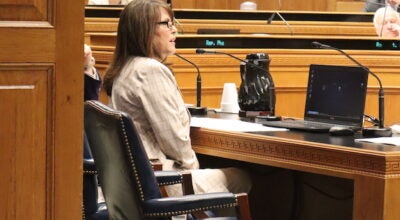Report finds Louisiana K-12 spending up, enrollment down
Published 11:25 am Saturday, March 16, 2024

- Graduates from Slidell High School prepare to receive their diplomas on May 9, 2023. (Photo courtesy of the St. Tammany Parish Public School System)
|
Getting your Trinity Audio player ready...
|
By Steven Wilson | The Center Square
Louisiana’s per-student spending has increased 32.1% from 2002 to 2020, a report on K-12 education by the Reason Foundation says.
The report, “Public Education at a Crossroads: A Comprehensive Look at K-12 Resources and Outcomes,” says per student spending increased from $10,411 in 2002 to $13,753 in 2020.
The Minimum Foundation Program is the state’s funding formula. According to the state constitution, the Louisiana Board of Elementary and Secondary Education drafts the formula each year and submits it to the Legislature for approval.
Last year, nearly $4 billion in state general funds was appropriated for K-12; the coming budget year will be nearly $4.23 billion.
Between 2003 and 2019, measured results by the National Assessment of Educational Process standardized tests were mixed. Fourth grade reading and math scores each increased by five points, ninth best in the U.S. for reading and 28th for math. For eighth graders, reading scores increased by four points (eighth best) and math scores went up by five points (18th best).
Low-income students improved. Fourth grade reading scores increased by seven points (ninth best) and math by five (31st). Eighth grade reading scores were up by five points (12th) and math increased by six points (21st).
The report also found that while enrollment from 2002 to 2020 fell by 2.9%, the numbers of staff at public schools decreased by 22%. Teachers (22.8%) had the biggest reduction, followed by other non-teaching staffers (21.1%). The inflation adjusted salary for teachers went from $52,458 in 2002 to $51,566 in 2020, a decrease of 1.7% that ranked the state 27th.
Reason found nationally that:
• Education spending was up in nearly every state.
• Teacher salaries lagged behind funding growth.
• Public school staffing growth is outpacing enrollment.
• Education dollars are increasingly being spent on employee benefits.
• There isn’t a consistent causation between spending and student outcomes, especially as evidenced by test scores.





